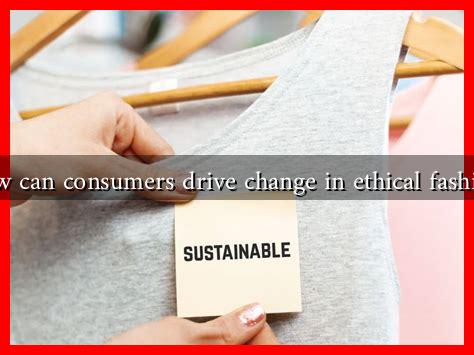-
Table of Contents
How Can Consumers Drive Change in Ethical Fashion?
The fashion industry is one of the largest and most influential sectors globally, yet it is also one of the most environmentally damaging and ethically questionable. As consumers become increasingly aware of the implications of their purchasing decisions, they hold the power to drive significant change in ethical fashion. This article explores how consumers can influence the industry towards more sustainable and ethical practices.
The Power of Consumer Awareness
Consumer awareness is the first step in driving change. With the rise of social media and information accessibility, consumers are more informed than ever about the impacts of fast fashion. According to a report by the Ellen MacArthur Foundation, the fashion industry is responsible for 10% of global carbon emissions and is the second-largest consumer of the world’s water supply.
By understanding these statistics, consumers can make more informed choices. Here are some ways consumer awareness can lead to change:
- Research Brands: Consumers can investigate brands’ ethical practices, looking for certifications like Fair Trade, GOTS (Global Organic Textile Standard), and B Corp.
- Support Transparency: Brands that openly share their supply chain practices and labor conditions are more likely to gain consumer trust.
- Educate Others: Sharing knowledge about ethical fashion can create a ripple effect, encouraging friends and family to make more sustainable choices.
Choosing Sustainable Alternatives
One of the most direct ways consumers can drive change is by choosing sustainable alternatives. This includes supporting brands that prioritize ethical practices and sustainability. Here are some options:
- Second-Hand Shopping: Thrift stores and online platforms like Depop and Poshmark allow consumers to buy pre-owned clothing, reducing waste and promoting a circular economy.
- Ethical Brands: Brands like Patagonia and Everlane are known for their commitment to sustainability and ethical labor practices. Supporting these brands sends a message to the industry.
- DIY and Upcycling: Consumers can also engage in do-it-yourself projects to repurpose old clothing, reducing the need for new purchases.
Advocacy and Activism
Consumers can also drive change through advocacy and activism. By voicing their concerns and demanding better practices, they can influence brands and policymakers. Here are some effective strategies:
- Petitions and Campaigns: Joining or initiating petitions that call for ethical practices in fashion can garner attention and pressure brands to change.
- Social Media Activism: Platforms like Instagram and Twitter can amplify messages about ethical fashion, creating a community of like-minded individuals.
- Engaging with Brands: Consumers can directly contact brands to express their concerns about unethical practices, asking for transparency and change.
Supporting Legislation for Ethical Fashion
Consumers can also influence change by supporting legislation that promotes ethical fashion. Governments can play a crucial role in regulating the fashion industry. Here are some ways consumers can get involved:
- Vote with Your Wallet: Supporting brands that comply with ethical standards encourages others to follow suit.
- Engage in Local Politics: Consumers can advocate for local policies that promote sustainable practices in the fashion industry.
- Participate in Public Forums: Engaging in discussions about fashion sustainability can help raise awareness and influence decision-makers.
Conclusion: The Collective Impact of Consumer Choices
Consumers have the power to drive change in the fashion industry by making informed choices, supporting sustainable alternatives, engaging in advocacy, and promoting legislation for ethical practices. As awareness grows and collective action increases, the fashion industry can shift towards a more sustainable and ethical future. By choosing to support ethical fashion, consumers not only contribute to a healthier planet but also promote fair labor practices and social responsibility.
In summary, the journey towards ethical fashion is a shared responsibility. Each purchase, each conversation, and each advocacy effort contributes to a larger movement that can reshape the industry for the better. For more information on ethical fashion and how to get involved, visit [Fashion Revolution](https://www.fashionrevolution.org/).

